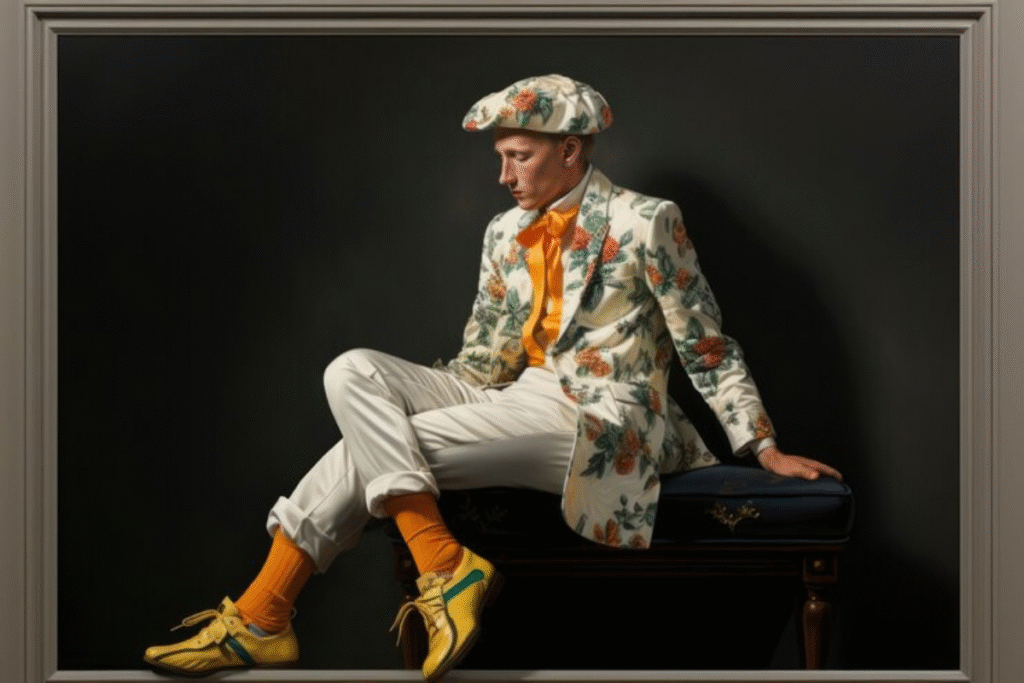Overview to The Evolving Fashion of Men: A Complete Guide to Modern Style
Fashion is a language. For men, it has evolved from rigid formalwear to a dynamic mix of function, culture, and personal expression. In this guide, we’ll explore the evolving fashion of men, tracing its history, modern movements, and how today’s man can build a wardrobe that balances timelessness with trend.
H2: A Brief History of Men’s Fashion
H3: Ancient to Medieval Times
Men’s fashion historically emphasized functionality and social status. In ancient Egypt and Rome, tunics and robes signaled class, while armor in medieval Europe blended fashion with battle-readiness.
H3: The Renaissance and Early Modern Period
By the 1500s, fashion turned into a mark of nobility. Think doublets, ruffled collars, and embellished fabrics—clear signs of wealth and aristocracy.
H3: 18th–19th Century: Tailoring and the Dandy
The Industrial Revolution brought mass-produced textiles, but elite men’s fashion focused on tailored suits, cravats, and the emergence of the “dandy” figure—men obsessed with fine dress and refinement.
H2: The Shift from Formal to Casual Wear
H3: The 20th Century Revolution
The World Wars revolutionized men’s clothing. Military uniforms influenced post-war menswear with functional, utilitarian pieces. Suits remained dominant, but by the 1960s, rebellion emerged.
H3: 70s to 90s: Personality Takes the Stage
From bell bottoms and floral shirts in the 70s, to punk leather jackets in the 80s, to minimalist streetwear in the 90s—individualism shaped fashion like never before.
H2: Streetwear: From Subculture to Mainstream
Streetwear—once the uniform of skateboarders, hip-hop artists, and rebels—has now taken over global fashion runways. Brands like Supreme, Off-White, and A Bathing Ape pioneered a movement now adopted by major labels like Louis Vuitton and Gucci.
H3: Why It Matters
- Represents cultural commentary
- Merges luxury and accessibility
- Fosters community identity (drop culture, exclusive collabs)
H2: Sustainable and Ethical Fashion Choices
Today’s conscious consumer demands more. Sustainability in men’s fashion is no longer a niche—it’s the future.
H3: What to Look For
- Brands using organic cotton, recycled fabrics, and plant-based dyes
- Transparent supply chains and fair labor practices
- Minimalist wardrobes (capsule collections reduce waste)
H3: Leading Sustainable Brands
- Patagonia
- Pangaia
- Outerknown
- Asket
H2: The Rise of Gender-Neutral and Fluid Styles
Rigid gender roles are dissolving in fashion. Men today wear nail polish, crop tops, skirts, and experiment with silhouettes without stigma.
H3: Key Influencers Pushing Gender-Fluid Fashion
- Harry Styles (Vogue cover in a dress)
- Jaden Smith
- Marc Jacobs (as designer and model)
H3: Style Elements
- Soft tailoring
- Androgynous color palettes
- Unisex cuts and fabrics
H2: How Social Media Shapes Modern Men’s Fashion
Instagram, TikTok, and Pinterest have replaced traditional magazines as the go-to for style inspiration. Influencers and micro-celebrities are trendsetters.
H3: Key Trends Social Media Promotes
- “#OOTD” (Outfit of the Day) culture
- Thrift and vintage hauls
- Aesthetic subcultures (dark academia, techwear, Y2K)
H3: Platforms to Follow
- Instagram: Best for style inspiration
- TikTok: Real-time fashion tips and hauls
- Reddit (e.g., r/malefashionadvice): Peer-reviewed outfit ideas
H2: Top Men’s Fashion Trends in 2025
As we navigate 2025, here’s what’s in for men’s fashion:
H3: Trending Styles
- Oversized blazers and pants
- Earth-tone layering
- Retro sneakers with formal wear
- Statement outerwear (trench coats, utility jackets)
H3: Trending Accessories
- Beaded and silver jewelry
- Crossbody bags and belt bags
- Chunky footwear (boots, sneakers)
H2: How to Build a Timeless Yet Modern Wardrobe
To stay stylish without chasing every trend, follow this 80/20 rule:
- 80% timeless basics
- 20% trendy or expressive pieces
H3: Must-Have Timeless Pieces
- White oxford shirt
- Navy blazer
- Slim-fit dark jeans
- Leather boots
- Wool coat
H3: Modern Additions
- Wide-leg trousers
- Graphic tees or hoodies
- Sneaker collaborations
- Techwear-inspired pieces (nylon, zippers, functional design)
FAQs About The Evolving Fashion of Men
Q1: What is meant by the evolving fashion of men?
It refers to the historical and ongoing transformation of men’s clothing, styles, and grooming habits. From traditional suits to today’s streetwear and gender-neutral looks, men’s fashion constantly adapts to cultural, social, and technological shifts.
Q2: Why has men’s fashion become more casual?
Cultural changes, the influence of youth subcultures, and the flexibility of modern workplaces have all contributed to more relaxed dress codes.
Q3: How does social media influence men’s fashion?
Social media accelerates trends, showcases real people’s styles, and democratizes fashion influence beyond celebrities and designers.
Q4: Can men mix trends with classic fashion?
Absolutely. This is the ideal way to stay modern while avoiding fast fashion waste. Layer trends over solid basics for a balanced look.
Q5: Is sustainability important in men’s fashion?
Yes, it’s increasingly crucial. Brands and consumers alike are focusing on ethical practices, quality over quantity, and reducing fashion’s environmental impact.
Conclusion: Fashion as a Reflection of Modern Masculinity
The evolving fashion of men tells a story of shifting identities, greater freedom, and a blend of the classic with the contemporary. Today, style is not just about what you wear, but how you wear it, why you wear it, and the values behind those choices.
Whether you’re a trend-chaser, a minimalist, or someone rediscovering your style, fashion is your personal canvas.



